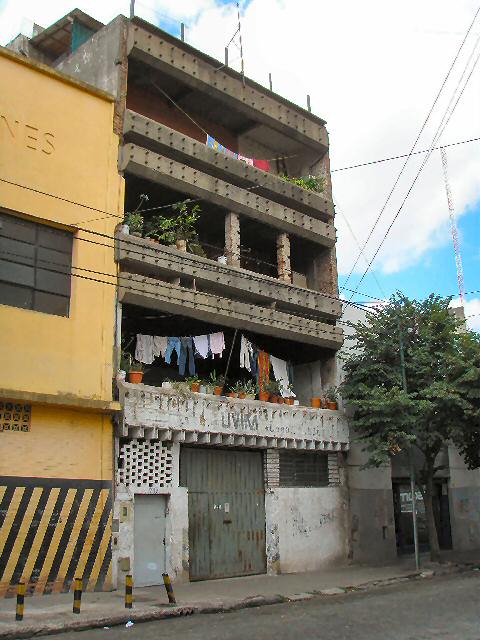This is a book that confronts one of the least known but important facts about the world’s cities: that they are home to more than a billion squatters. Within a generation, that number is projected to grow to two billion – and more than half the people living in cities will be squatters. Yet most outsiders are unwilling to step into their communities, fearing crime, disease, and distress.”
– Robert Neuwirth, Shadow Cities

Buenos Aires – Those who write about the poor communities in town tend to focus on the villas, the shantytowns that you can see in various places around the city – mostly near to the railway stations, but in some cases taking up whole sections of various barrios. What’s generally unremarked on are the number of buildings that have been abandoned for one reason or another – probably economic back in 2001 or shortly thereafter, but that have been reclaimed by squatters – likely families who lost their homes in the very same crash – who have taken up residence and are doing their best to create a liveable shelter. This building is on Agüero, a mere two blocks from the Abasto, an area that’s being steadily transformed with new hotels, businesses, and apartment buildings – yet those two blocks are ones that most of the tourists staying there will never walk.
An interesting note about the proximity of many of the communities, and make no mistake, they are communities, to the railway tracks, at least based on a conversation I had with a local friend who has been involved in much outreach work here. Apparently, at one time the railways were all privately owned, but the companies essentially went bankrupt, or were forced out of business by past governments – the reason isn’t important. What was done is that the government took over the operation of the railways, but never took over title to the lands that were owned by the companies – and with the companies out of business, and in many cases with simply no one left around to claim them, the grounds that surround the railway tracks have become a sort of non-titled, no-man’s land, with no one who currently exists, or at least who cares, owning the property, and therefore, leaving them in a sort of limbo – non-public and non-private – just there.